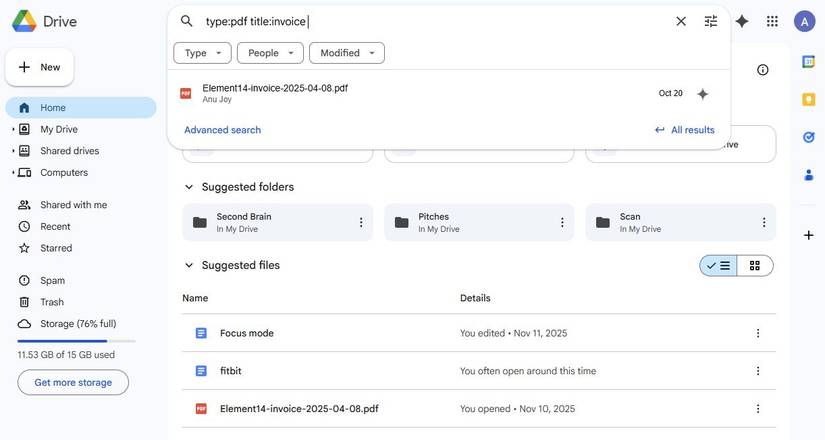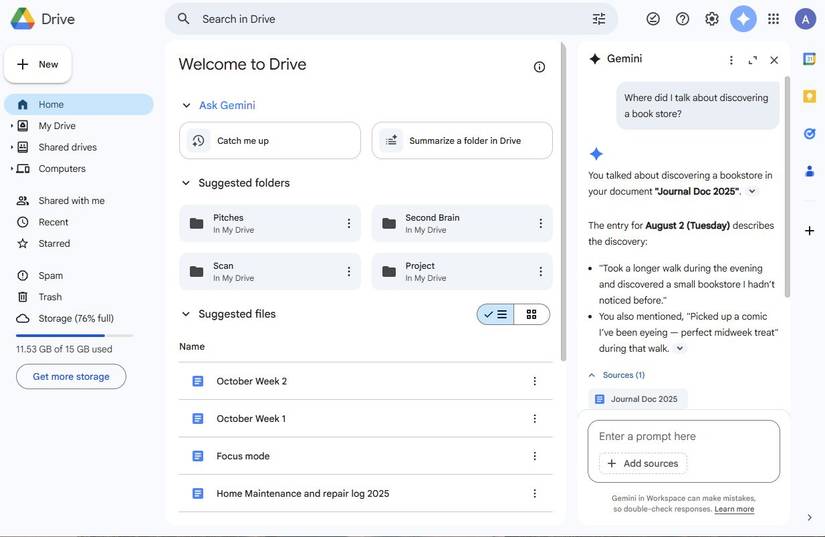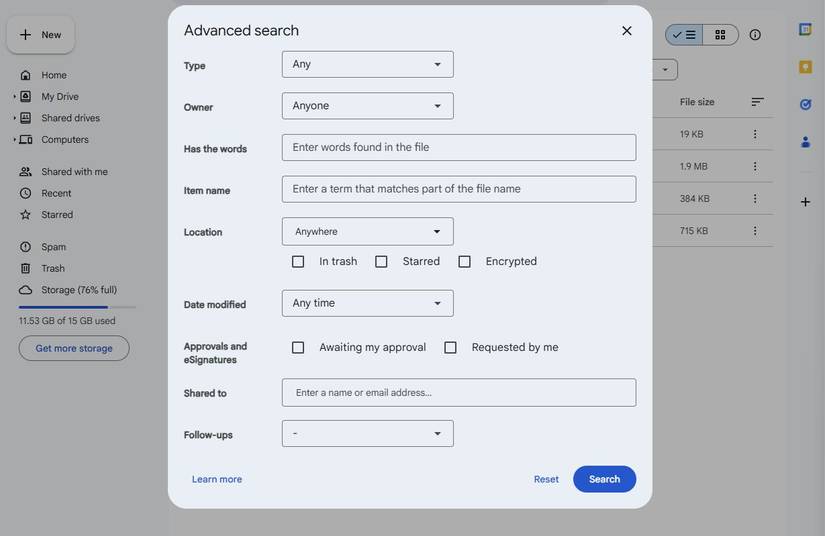I’ve used Google Drive for years, and for most of that time, I treated it like a digital junk drawer. Everything I ever created, downloaded, or collaborated on ended up there.
The irony was that I could never find what I wanted when I needed it. Then one day, instead of reorganizing everything, I started paying attention to Drive’s search bar.
After I learned how to use filters, operators, and a few hidden tricks, I stopped digging through folders completely. Now, I can pull up anything on my phone or computer in seconds.
The secret power of search chips
A faster way to narrow things down
You’ve probably seen those little bubbles in Google Drive that appear just below the search bar when you type something, like Type, People, and Modified. They’re called search chips, and they’re incredibly effective when you know how to use them.
Instead of typing complicated search terms, I’ll click Type: PDFs when I’m searching for receipts, or People: Me to eliminate shared clutter. The best part is that you can use these filters together.
For instance, you can combine Type: Spreadsheets with Modified: Last 30 days to instantly narrow down hundreds of files to what you need.
What makes them powerful is that you don’t have to remember search operators or dig through folders.
Search operators are where the real magic happens
How I use search syntax to skip the clutter
After I was comfortable with search chips, I started experimenting with Drive’s search operators.
For example, when I can’t remember what I named a file but know it’s a PDF invoice, I’ll enter type:pdf title:invoice in the search bar.
If I know it’s something a coworker shared months ago, owner:[email] instantly narrows it down. You can even use before: and after: to filter by date.
One of my favorite tricks is combining multiple operators. If I want to find a Google Docs file my teammate wrote that mentions a specific client, I’ll type something like:
type:documents owner:[email] “client name”
Google Drive even searches within the text of documents, not just their titles. This feature allows me to locate the exact paragraph I need without having to open multiple files.
The best part is that these search operators also function in Drive’s mobile app, letting me perform precise searches from my phone without navigating through endless menus.
Using natural language search for casual queries
Getting the right results with Gemini
Even with all the filters and search operators, sometimes I don’t want to think in commands. That’s where Gemini’s integration with Drive changes everything.
Instead of remembering a filename or typing type:pdf before:2024, I can say what I mean: “Show me the design drafts from last summer” or “Find the notes from the app launch meeting.”
Gemini pulls up the most relevant files instantly, often surfacing things I’d completely forgotten existed.
What makes this even better is how it blends with my workflow. I can start a conversation with Gemini, find the file, and open it in Drive without leaving the chat.
Using starred files as a short-term memory system
A low-effort way to keep my active projects in sight
One of my favorite Drive habits is starring files that I’ll need for the next few days. It’s my short-term memory system.
When I’m working on a story draft, a spreadsheet, or a form I’ll need later in the week, I star it. Then I can search is:starred or click Starred in the left sidebar to instantly pull up my current workspace.
It’s a lightweight way to keep current projects at the top of my Drive without overthinking folders or naming conventions.
The advanced search panel
For when you forget syntax
If typing search operators feels like too much work, you don’t have to memorize them. Just click the sliders icon at the far right of the search bar to open the Advanced search panel.
It provides dropdown menus for file type, owner, location, date modified, and whether the file includes mentions of “people” or “names.”
It’s the perfect middle ground between casual searching and memorizing search operators. Modify a few filters, and let Drive handle the rest.
Let Google Drive do the heavy lifting
What I have learned after years of trying to fix my messy Google Drive is that organization is not about color-coded folders or naming systems.
Instead, I rely on the search system by using search chips, operators, and the advanced search panel to find exactly what I need.
My starred files serve as a quick-access desk for the week, while Drive’s ability to search inside files turns even unlabeled documents and scanned notes into something usable.
Gemini’s growing role in surfacing context and summarizing files makes things even more convenient.






